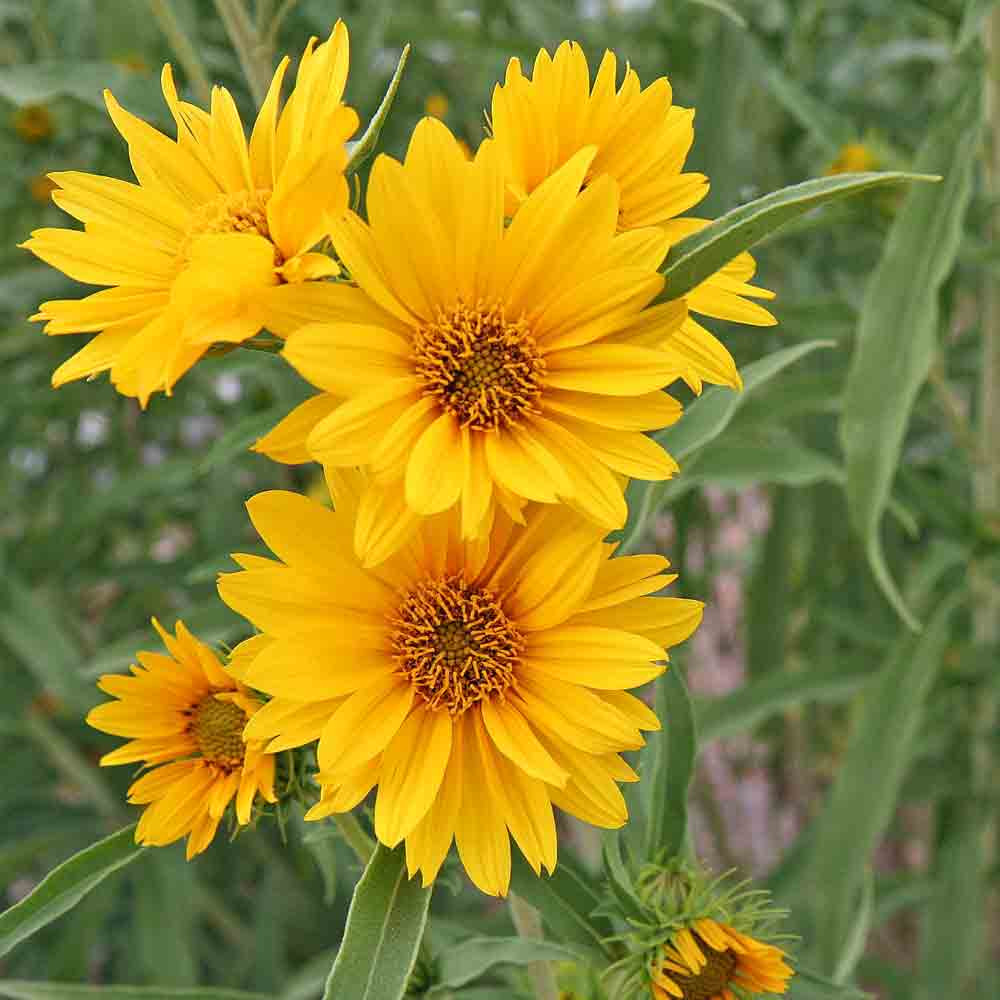Description
Maximilian's Sunflower - A Naturalist's Sunflower
A hardy and very showy perennial that towers above surrounding vegetation when in bloom. It sends annual stems up from an underground root crown, helping to spread and form dense plant clusters while reinforcing soil and preventing erosion. Its height ranges from 6 – 10 feet tall with numerous 5-inch diameter flower heads. Butterflies, beetles, and long- and short tongued bees consume the nectar and pollen. Butterfly caterpillars feed on the leaves.
History
It is named for the naturalist Prince Maximilian of Germany who led an expedition into the American West in the 1830's.
Uses
Experienced gardeners grow it near patios or doorways and gardens to repel mosquitoes. Often grown as a hedge or natural screen because of its height and density when mature. Organic growers use it to naturally filter or screen invasive weeds and their seeds from entering a property. The smaller flower heads make excellent additions to cut flower mixes. It is used as a conservation planting for habitat development and restoration, as well as range and pasture maintenance.
The large, composite flowers are magnets for bees of all kinds, especially bumblebees, as well as attracting a myriad of pollinators into the garden, from different bees to butterflies and even hummingbirds.
Once the seeds mature, they bring in tiny finches and myriad other birds who delight in pulling the seeds out of the head and feeding on them one by one.
Sunflowers have one of the most aggressive root systems known, drilling down through hardpan or clay. We’ve used them as the first stage in cover cropping a new area, opening up the soil making it easier for the next cover crop mixture. They also work great to pulverize a hard spot in the raised beds or flower bed, making it perfect for next season.
Their roots have one of the most aggressive allelopathic effects on seed germination we’ve seen. The allelopathic effect inhibits other seeds from germinating in the same soil, and is one of the reasons when weeds pop up first – everything else has a hard time growing. Sunflowers are used to put the hurt on weed seeds.
Sunflowers make an excellent windbreak in our southwestern climate, we plant them on the south and west sides of the garden to slow down and filter the near-constant winds to something our tomatoes, peppers, and corn can handle.
Companion Planting
Sunflowers make good companion plants for cucumbers and melons – planted after the melons and cukes have sprouted to avoid the allelopathic effect. They provide shade, wind protection, and shelter for the vegetables.
Trap Cropping
Sunflowers make an excellent trap crop, attracting sucking insects like the stink bug and leaf-footed bug away from tomatoes and peppers. Learn more about what trap crops are and how to use them in our trap cropping article.
From the soil to the seed to the food you eat - we'll help you grow your best garden!
1 Review
-
Pretty flowers
I was given some of these plants years ago. They grow tall and spread. My seeds came up great and are about a foot tall this summer. Can't wait till next year. They perfectly sized little flowers.















